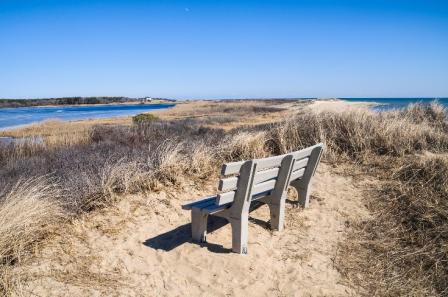EPA Scientists Develop Method for Estimating Recreational Visitors and Value of Cape Cod Estuaries
Published July 6, 2020
 Coasts and estuaries often provide communities with vital ecosystem services including food, recreational opportunities, and other important resources. For coastal communities on Cape Cod, Massachusetts, estuaries are highly valued for these resources, and are part of the attraction to a region that draws in over five million visitors each year.
Coasts and estuaries often provide communities with vital ecosystem services including food, recreational opportunities, and other important resources. For coastal communities on Cape Cod, Massachusetts, estuaries are highly valued for these resources, and are part of the attraction to a region that draws in over five million visitors each year.
While open-ocean beaches are popular recreation areas known to provide significant economic value to the Cape, less is known about how smaller coastal areas, such as estuaries, are used and valued by visitors and residents. Estuaries can be burdened with many environmental stressors and are more likely to be affected by degraded water quality than open water beaches, but typically receive fewer resources towards estimating recreational use.
Understanding the social and economic value of recreation for an estuary is important, because it provides beach managers and other environmental decision-makers with valuable insights into the benefits of investing resources in recovering an estuarine area. Recreational data can also provide baseline data that’s helpful for estimating the impact of adverse events, such as oil spills, beach closures for bacteria, or algal blooms.
To better understand the role that estuaries play in overall coastal recreation, EPA researchers have developed a new method to study the number of visitors to Cape Cod’s estuaries.
For a recently published study, EPA researchers focused on the number of visitors to small beaches, boat launches, and smaller coastal access points in the Three Bays estuary on Cape Cod – a 1,251-acre embayment system that includes North Bay, West Bay and Cotuit Bay.
EPA researchers developed an observational sampling approach, counting cars at public access points at set times for a “snapshot” of the day, and then multiplying by model-based numbers derived from all-day counts of visitors. Scientists then used the model-based numbers to relate the number of cars observed at the “snapshot” moment to actual visitation counts for that same hour.
“We wanted to create a way to estimate the number of recreational visitors that would be less expensive and easy to implement by non-researchers like summer interns or beach managers,” said Kate Mulvaney, EPA social scientist and lead author on the study.
In evaluating their study approach, scientists found that counting cars within a preferred time window of 11 a.m. to 4:30 p.m. led to estimates within 44 percent of actual daily visitation. The team found that the accuracy of the method could be increased by additional counting at the access points (e.g., boat ramp or beach), but this increase in accuracy would come with a tradeoff as it would entail more resources to conduct as well as a more complicated application by users. These estimates suggest that use across all public access sites in the estuary is similar to the use at a mid-sized coastal beach, which demonstrates the popularity of these estuaries for coastal recreators on Cape Cod.
Based on the research team’s analyses, Mulvaney believes this method could indicate a lower baseline of how many people are using different estuarine public access points.
“This work lets us learn more about recreational use at different kinds of recreational access points on estuaries besides just beaches,” Mulvaney said. “The estimate for Three Bays is useful for town planners, beach managers, and other officials responsible for managing the use of recreational access points. It also provides a baseline so that we can identify changes in use with improvements or degradation in water quality.”
This research method also has the potential to be applied by beach managers and those in charge of other coastal access points across New England and beyond to estimate visitation and use of these coastal areas.
Information about this study and method was recently published in the journal Estuaries and Coasts.
